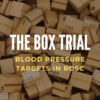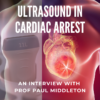OK here it is!
We’ve just finished and amazing Cardiac Course (next year’s course now open) at RPA in Sydney and I must say that everyone thought the idea of being able to pick the most important parts of the ECG and read an ECG in 20 seconds without wasting time looking for things that aren’t important and won’t help was great.
My approach will give you about a 95+% yield on ECG’s, you may not pick some of the exotic stuff, but it will do 3 things:
1 Help you pick ischaemia.
2 Help you pick arrhythmia.
3 Help you identify a subgroup of ECG’s that may indicate something is not quite right and this patient needs further workup i.e. high sensitivity, low specificity. You won’t send these patents home.
This is what I care about! I’m an Emergency Physician and want to pick up the important stuff. What arrhythmia is this, who don’t I AV block etc.
STEP 1
Correlate the ECG with the patient. Are there symptoms and signs of ischaemia or arrhythmia? Is there syncope?
STEP 2
Look at the rate. Is it fast? Calculate by the 300,150, 100…approach or the calculation of QRS complexes in 6 seconds of ECG and multiply x 10.
If the rate is slow – need to go down the blocks pathway of looking for the Mobitz blocks and the complete heart block.
Is it sinus? Look for P waves in lead II. This is the best lead to see P waves. They should be upright in II and inverted in aVR. A complete heart block should be identifiable at this point.
STEP 3
Look at the QRS. Is it normal width or wide(>3 small squares)?
Wide QRS may indicate bundle branch block. We discussed BBB, but the simple way to remember is Right BBB has an M in V1/V2 and Left BBB has a deep S wave in V1/V2.
If it is a bundle branch – this is the only time I look at axes, because a right bundle branch block with a LAFB or LPFB is trouble. If there is a RBBB and fascicle block, I look at the PR interval here, as this may give me the diagnosis of a TRI-FASCICULAR block.
If the QRS is normal width, I still look at the morphology to ensure no delta wave(WPW).
STEP 4
Look at the ST segments for ST elevation/depression and T waves for inversion or biphasic patterns (Wellens).
Look in the territories i.e. anterior, inferior, lateral, posterior and the 12th lead aVR.
STEP 5
Look at the intervals PR and QT and ensure they are not prolonged.
The detail was discussed at the Cardiac Course and are also available on THE ECG DVD Course i.e.
-What are the important elements of diagnosing Mobitz II and how to differentiate Mobitz II prom PAC?
-How to diagnose AMI in LBBB and paced rhythms
-How to diagnose Left ventricular hypertrophy
-Wellens
-Brugada
-Cardiomyopathy
-Electrolyte abnormalities
-Digoxin toxicity
…and MORE.











[…] ECG in 20 seconds explained | Resus.com.au | Knowledge … […]